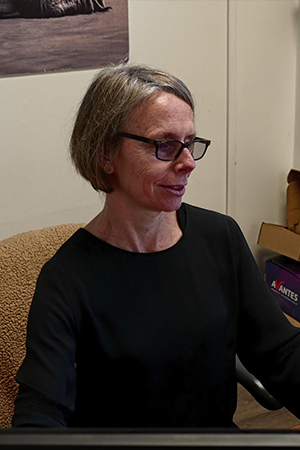The Best Strategy To Use For Circularly Polarized Luminescence
The Best Strategy To Use For Circularly Polarized Luminescence
Blog Article
Our Uv/vis Statements
Table of ContentsThe Main Principles Of Uv/vis Little Known Facts About Uv/vis.Things about Circularly Polarized LuminescenceThe Ultimate Guide To Circular DichroismNot known Facts About Uv/vis/nir

Spectrophotometry is most frequently used to ultraviolet, noticeable, and infrared radiation, modern-day spectrophotometers can question broad swaths of the electro-magnetic spectrum, consisting of x-ray, ultraviolet, noticeable, infrared, and/or microwave wavelengths. Spectrophotometry is a tool that depends upon the quantitative analysis of particles depending on how much light is absorbed by colored substances.
Our Uv/vis Diaries
A spectrophotometer is frequently utilized for the measurement of transmittance or reflectance of options, transparent or nontransparent solids, such as sleek glass, or gases. Although lots of biochemicals are colored, as in, they absorb noticeable light and for that reason can be measured by colorimetric treatments, even colorless biochemicals can typically be transformed to colored compounds ideal for chromogenic color-forming reactions to yield substances appropriate for colorimetric analysis.: 65 However, they can also be developed to measure the diffusivity on any of the noted light ranges that normally cover around 2002500 nm utilizing various controls and calibrations.
An example of an experiment in which spectrophotometry is used is the decision of the equilibrium constant of a service. A particular chemical response within a solution may happen in a forward and reverse instructions, where reactants form products and items break down into reactants. At some time, this chemical response will reach a point of balance called an equilibrium point.
Unknown Facts About Uv/vis
The amount of light that travels through the option is indicative of the concentration of certain chemicals that do not allow light to travel through. The absorption of light is because of the interaction of light with the electronic and vibrational modes of molecules. Each kind of particle has an individual set of energy levels related to the makeup of its chemical bonds and nuclei and hence will absorb light of specific wavelengths, or energies, leading to unique spectral properties.
They are widely used in numerous industries consisting of semiconductors, laser and optical production, printing and forensic evaluation, as well as in laboratories for the research study of chemical substances. Spectrophotometry is typically utilized in measurements of enzyme activities, determinations of protein concentrations, determinations of enzymatic kinetic constants, and measurements of ligand binding reactions.: 65 Eventually, a spectrophotometer is able to figure out, depending on the control or calibration, what compounds are present in a target and exactly how much through calculations of observed wavelengths.
Created by Arnold O. Beckman in 1940 [], the spectrophotometer was developed with the aid of his coworkers at his company National Technical Laboratories founded in 1935 which would become Beckman Instrument Business and ultimately Beckman Coulter. This would come as an option to the formerly created spectrophotometers which were not able to absorb the ultraviolet correctly.
Getting My Uv/vis To Work
It would be found that this did not provide acceptable results, therefore in Design B, there was a shift from a glass to a quartz prism which permitted better absorbance outcomes - circularly polarized luminescence (https://hubpages.com/@olisclarity1). From there, Model C was born with an adjustment to the wavelength resolution which ended up having 3 units of it produced
It was produced from 1941 to 1976 where the rate for it in 1941 was US$723 (far-UV devices were a choice at additional expense). In the words of Nobel chemistry laureate Bruce Merrifield, it was "most likely the most crucial instrument ever established towards the development of bioscience." Once it became ceased in 1976, Hewlett-Packard produced the first commercially offered diode-array spectrophotometer in 1979 referred to as the HP 8450A. It irradiates the sample with polychromatic light which the sample soaks up depending upon its homes. It is transmitted back by grating the photodiode selection which finds the wavelength region of the spectrum. Ever since, the production and application of spectrophotometry devices has actually increased exceptionally and has actually become one of the most ingenious circularly polarized luminescence instruments of our time.

The Ultimate Guide To Uv/vis/nir
Historically, spectrophotometers use a monochromator consisting of a diffraction grating to produce the analytical spectrum. The grating can either be movable or fixed. If a single detector, such as a photomultiplier tube or photodiode is used, the grating can be scanned step-by-step (scanning spectrophotometer) so that the detector can determine the light intensity at each wavelength (which will represent each "step").
In such systems, the grating is fixed and the strength of each wavelength of light is determined by a various detector in the range. Furthermore, most modern-day mid-infrared spectrophotometers use a Fourier change method to get the spectral details - https://dribbble.com/olisclarity1/about. This method is called Fourier change infrared spectroscopy. When making transmission measurements, the spectrophotometer quantitatively compares the portion of light that passes through a recommendation service and a test service, then digitally compares the strengths of the 2 signals and calculates the portion of transmission of the sample compared to the referral requirement.

Report this page